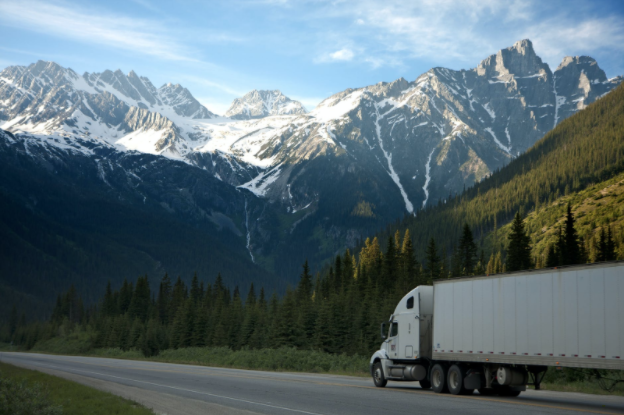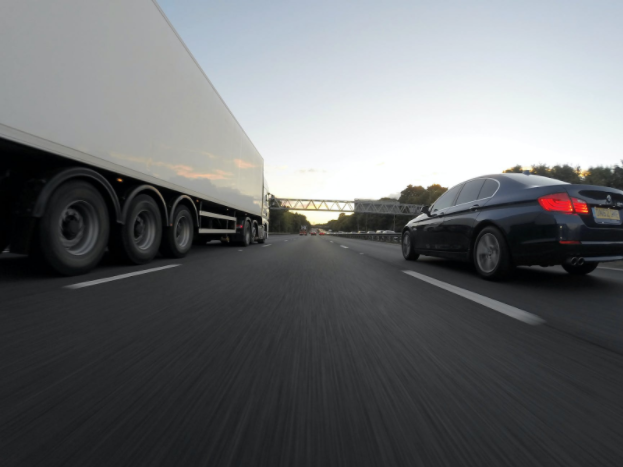Are you operating in the HGV industry right now? You might think that you know what the future is going to look like for this industry. But we’re not so sure that’s the case at all. Indeed, it’s possible that the path of this industry over the next few years is going to hold quite a few surprises. Particularly in terms of the employees who will be operating the HGVs and the tech that is going to be used.
That said, it is worth preparing for the future of this sector. By making sure that you prepare, you can guarantee that you won’t be caught off guard by the changes. This can also help ensure that you are able to jump ahead of the curve and prepare your business for the challenges of tomorrow. Or, make sure that you are able to find your place as an employer in this industry.

Will HGV Trucks Become Outdated?
Technology moves at a rapid pace these days. What was once the epitome of breaking, cutting edge technology is now at the bottom of the scrap heap. Remember, the days when computers were so big that you couldn’t carry them around? Of course, you do because it was only a few years ago. Now everything fits into your pocket and some of the tech available is thinner than a fingernail.
The technology for deliveries is changing rapidly too. For instance, we now have electric cars and that was once considered a pipe dream. The mileage and charging times of electric cars are also improving. Soon enough they will rival or even surpass the capabilities of the typical petrol engine.
As technology continues to grow, many people begin to question the potential necessity of HGVs. Perhaps, you are even questioning whether there is a more economical and efficient way to handle the transportation of goods. It’s completely understandable why you might question this possibility, but it’s certainly not the case. HGVs are still the best way to transport products, particularly across long distances.
Take drones for instance. People were incredibly excited when Amazon started talking about using drones to make deliveries. However, the usage of these drones is incredibly limited. Indeed, the Amazon drones can only be used to deliver products that are only a couple of miles or even a few hundred yards away from the final address. You see the problem? You can’t yet deliver items across hundreds of miles with this type of tech. Now, this could change in the future, but there’s no guarantee it will be cost-effective enough for every business to access and no evidence to suggest this.
Will HGVs Change?

HGVs won’t become outdated but they will certainly evolve as technology continues to change. It’s important that the designers and creators of these vehicles are able to stay ahead of the curve. Of course, tech is nothing new to the HGV industry. Indeed, one of the most recent and useful tech updates for these vehicles is the ability to track the machines. This can provide huge benefits including providing customers and clients with updates on when a product or delivery is going to arrive. It also allows business owners and suppliers to keep track of efficiency levels at the same time.
Furthermore, companies also use tech for a variety of other purposes with HGVs as well. Using something like a Sling employee time clock app it’s possible to track down to the second how long individual drivers have been on the road. That’s vital because there has been a lot of media lately surrounding whether these vehicles are a threat to drivers. They are responsible for a number of deaths on the road every year and a lot of these are linked to fatigue. There have been cases where notable celebrities such as Tracy Morgan have been involved in accidents with HGV trucks. This has caused a public outcry and forced businesses to act. So, there is already a demand to make these vehicles safer and tech is now reaching the point where we can do this.
For instance, autonomous technology is getting more advanced by the year. As you read this article, there are over 100,000 self-driving cars operating on UK roads. HGVs are guaranteed to be next but what form will this take? Well, the latest technology is directed at smart links. So, rather than having one truck running on the roads, there would be a fleet of them digitally connected. You can think of this as a train with different connecting carriages except the links are invisible. It’s worth noting that this tech is only in the very early stages. However, it could certainly be possible within about five years.
The problem is that it would require a massive restructuring of all major road systems. Essentially, there would need to be a separate lane for these vehicles to operate on. Even then there is some uncertainty around whether cars next to the connected fleet would be safe from accidents, even with the latest tech.
Will This Lead To The End Of HGV Drivers?

It’s understandable why you might assume self-driving vehicles will lead to a severe reduction in the need for drivers. Rest assured, if you are an HGV driver your job is currently secure and certainly a great deal more secure than other industries. Why is this?
Most people are not aware that there are five levels of autonomous vehicles, as laid out by tech experts and producers. You might think that your Tesla or Mercedes is the peak of the self-driving vehicle. But that’s not trusted. The current tech on the market is like those old, chunky brick-shaped laptops that weighed a ton and we mean that literally. Most car producers right now are comfortably sitting at level 3 in terms of autonomous tech. That’s why you need to keep both hands on the wheel. These cars can’t actually drive themselves. What they can do is provide advanced assistance for drivers. Level 5 is the point where drivers would become obsolete. The best estimate is that this could happen in ten years at the earliest. Even then it’s unlikely that companies are going to be comfortable sending out vehicles with no one in the cockpit at all.
Instead, it’s far more likely that driving an HGV is going to be a little like flying a plane. You might think that pilots are constantly working while flying but this isn’t the case. Pilots need to complete some checks and operate the controls for taking off and landing. For the rest of the journey, the vehicle is essentially on auto-pilot. It will fly itself and there has been a lot of progress in designing planes that can land without assistance as well. The pilot is basically the backup and is there when needed. This could become the case for HGV drivers too.
What Will The Drivers Look Like?
There’s a common conception that most HGV drivers are male and that it is a male-dominated industry. Historically, this has been accurate however recently more women than ever before are pursuing these roles and exploring the benefits of operating in this industry. There’s also a higher level of demand for drivers with more skill and experience. Due to the higher level of skill required, working conditions and pay are both improving. This is leading to a wide demographic of workers pursuing a position in this industry.
Some experts and reports suggest that within the next five years there will be a fifty, fifty split in terms of male and female drivers.
Will More Qualifications Be Needed?
Finally, there is some fear that operating in this industry is going to require more qualifications in the future. However, this probably won’t be the case. There are already strict laws right now to make sure that only the best drivers are operating these vehicles. Safety is always going to be the most important consideration here and that’s why these regulations are put in place. Some people are questioning whether economic changes like Brexit are going to cause further requirements to be put in place. But again, it’s highly unlikely.
We hope this helps you understand that the HGV industry could look quite different from what people expect in the next few years. It’s certainly true that tech is going to play a massive part in shaping this sector, but businesses are always going to need to be more flexible. This could change the way that employees are hired and we could see a shift towards a dependence on the gig industry. It’s possible that HGV drivers will be hired on short term contracts more often for individual jobs and this could also work through technology. Businesses could quickly search and hire HGV drivers for jobs who were in the right place and able to offer the best quality of service. One thing is certain. Regardless of what the future holds, tomorrow will certainly not look anything like today in the HGV world.



.gif?rand=7292)











